If you’ve just gotten your hands on a flatbed chain stitch machine, you might be staring at it thinking, “Okay… now what?”
Don’t worry, you’re not alone.
This machine looks a little different from the regular chain stitch one that most people start with. But once you get the hang of it, it’s actually super beginner-friendly.
Here is how to use a flatbed chain stitch machine-
Flatbed Chain
To use a flatbed chain stitch machine, thread it correctly, place your fabric flat on the bed, guide it steadily under the presser foot, and let the machine form continuous chain stitches.
So, if you’re new to it, think of this as your step into cleaner, more flexible stitching. Then let’s figure it out.
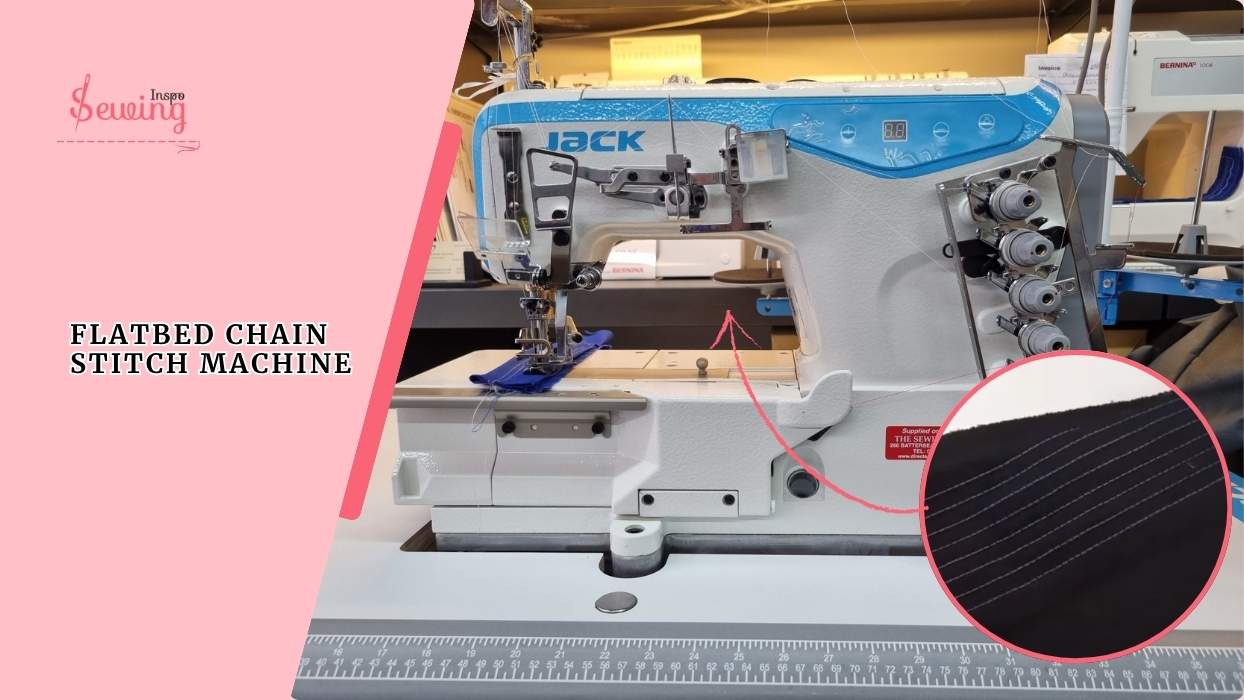
Table of Contents
Can You Chain Stitch With A Regular Sewing Machine?
No. A regular sewing machine usually makes lockstitches, not chain stitches.
A chain stitch needs a special mechanism to form those interlinked loops, which most household machines don’t have.
However, some modern sewing machines do have a decorative chain stitch option or you can mimic the look with certain embroidery stitches.
If you really want true chain stitches, you’ll need a dedicated chain stitch machine like a flatbed or falak machine.
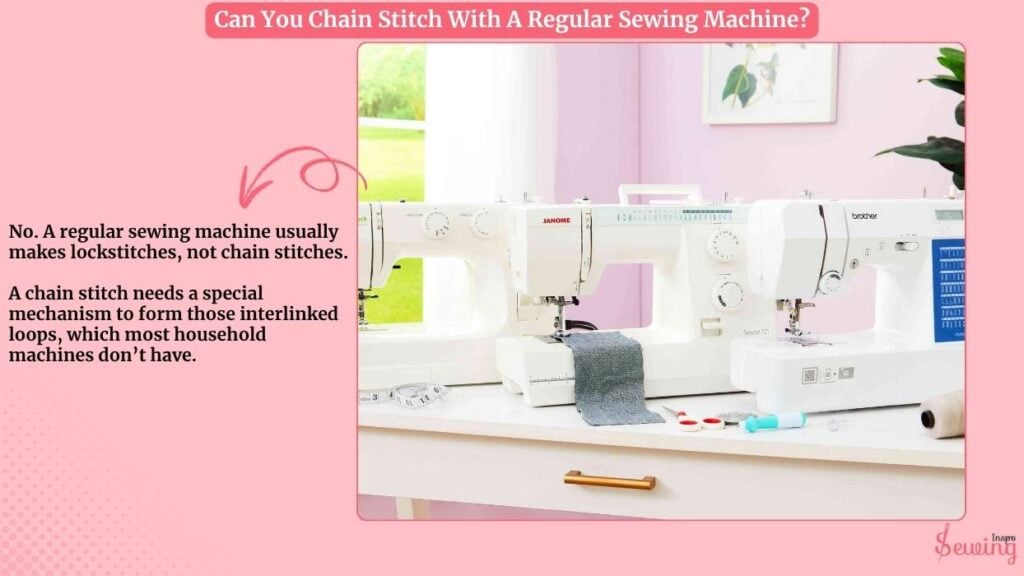
Flatbed Chain Stitch Sewing Machine Setting
To set up a flatbed chain stitch sewing machine, start by threading it carefully, following the specific path designed for chain stitch embroidery.
Then, adjust the thread tension. You need to keep it as low as possible while still producing neat stitches.
It will prevent puckering or skipped loops. For stitching, use a single needle with standard thread, and adjust the stitch length and quality settings according to your fabric and project needs.
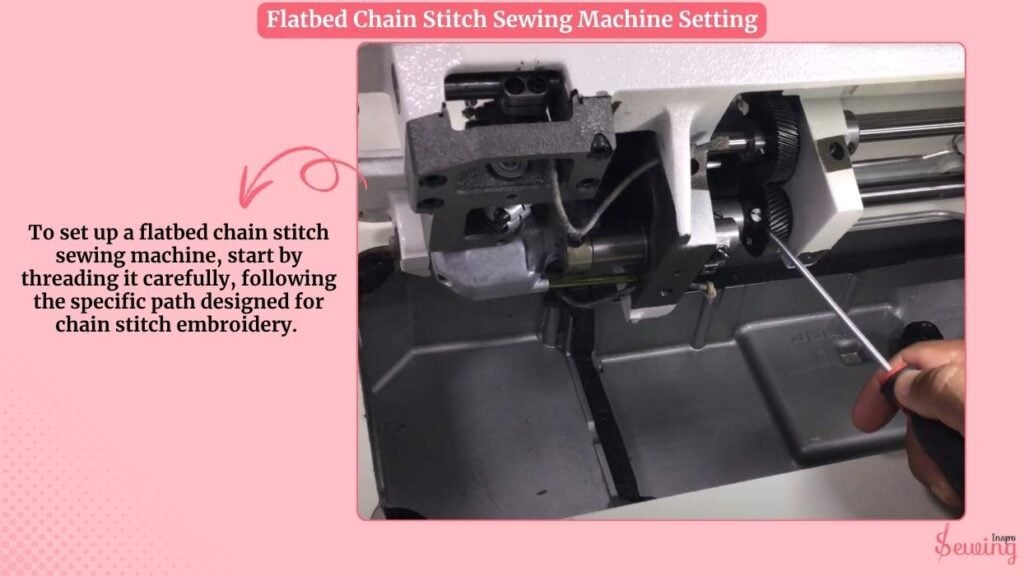
How To Use a Flatbed Chain Stitch Machine?
To use flatbed chainstitch, follow the steps,
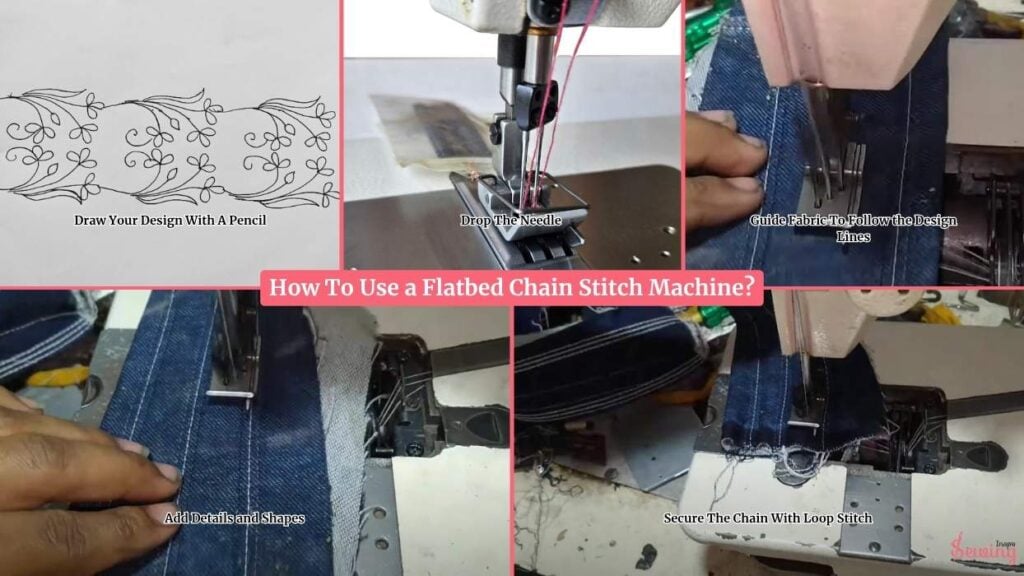
Draw Your Design With A Pencil
Before I even touch the machine, I grab a fabric pencil or washable marker.
I sketch my design directly onto the fabric. Maybe some flowers, a border pattern, or even just a set of swirls. If I’m not confident freehanding, I trace the design using carbon paper or a stencil. I do this while using a Juki chain stitch machine, too.
The key is to keep the lines visible but light, so they guide me while stitching and disappear after washing.
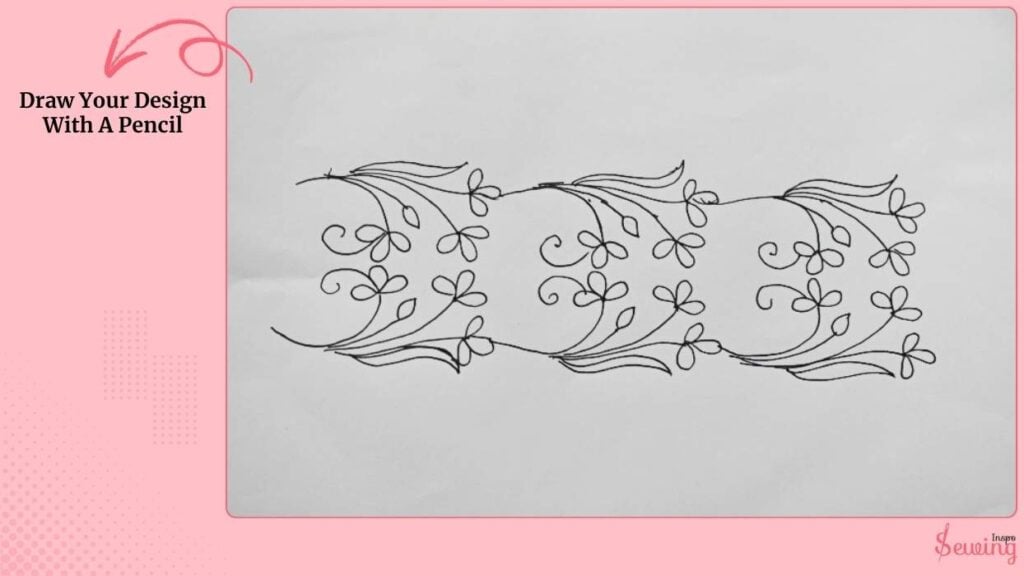
Drop The Needle
Drop the needle right at the beginning of your drawn line. As the machine runs, the needle pierces the fabric, carrying the thread through.
Underneath, the looper grabs the thread and forms a neat chain that follows wherever I guide the fabric.
Guide Fabric To Follow the Design Lines
I guide the fabric gently with both hands, keeping my eyes on the drawn line. On straight parts, I let the machine feed naturally like a single needle lock stitch machine.
On curves or circles, I rotate the fabric slowly, making sure the chain stitch bends smoothly without breaking.
It feels a bit like “drawing with thread,” and the flatbed gives me a steady surface to keep things controlled.
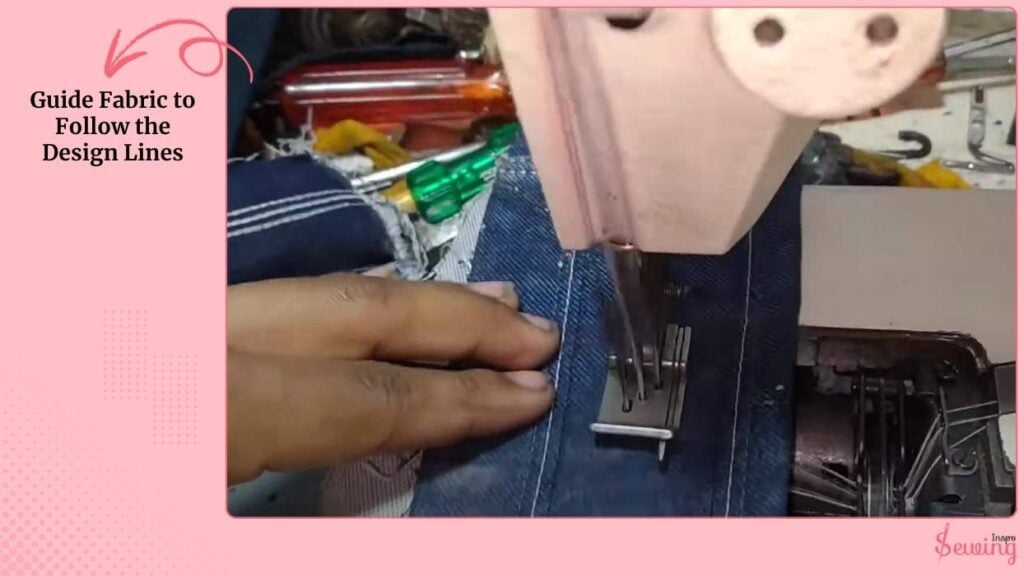
Add Details and Shapes
If my design has petals, I stitch each curve one at a time, always keeping the chain neat. I even maintain this for double chainstitch.
For filling areas, I stitch back and forth in rows, almost like coloring inside the lines.
I can even switch thread colors mid-way by tying off one chain and starting another.
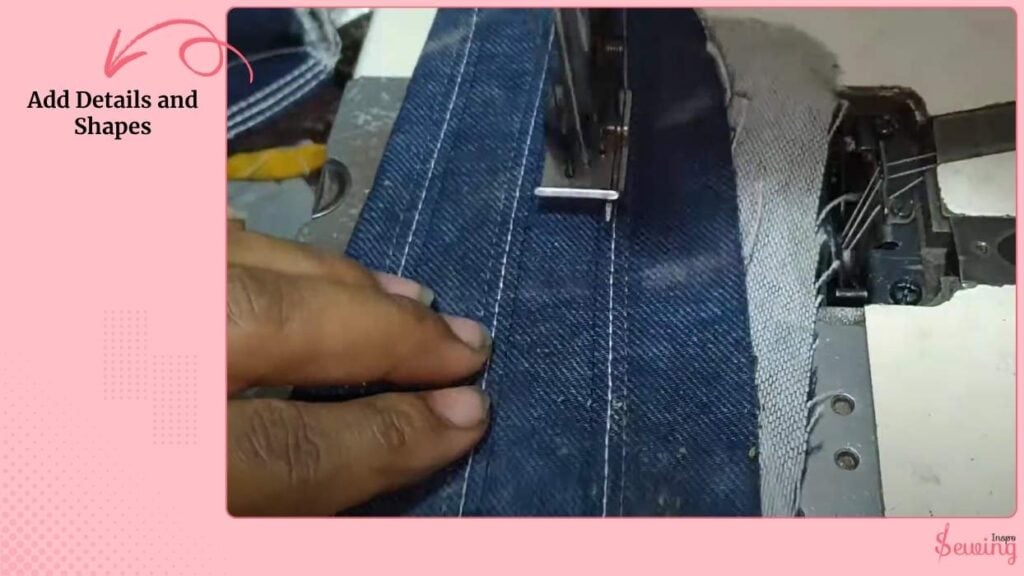
Secure The Chain With Loop Stitch
Once the design is finished, I raise the needle and presser foot. I pull the fabric back gently, cut the thread, and leave a little tail like doing portable sewing machine stitches.
To stop the embroidery from unraveling, I pull the last loop through itself or tie it off on the back.
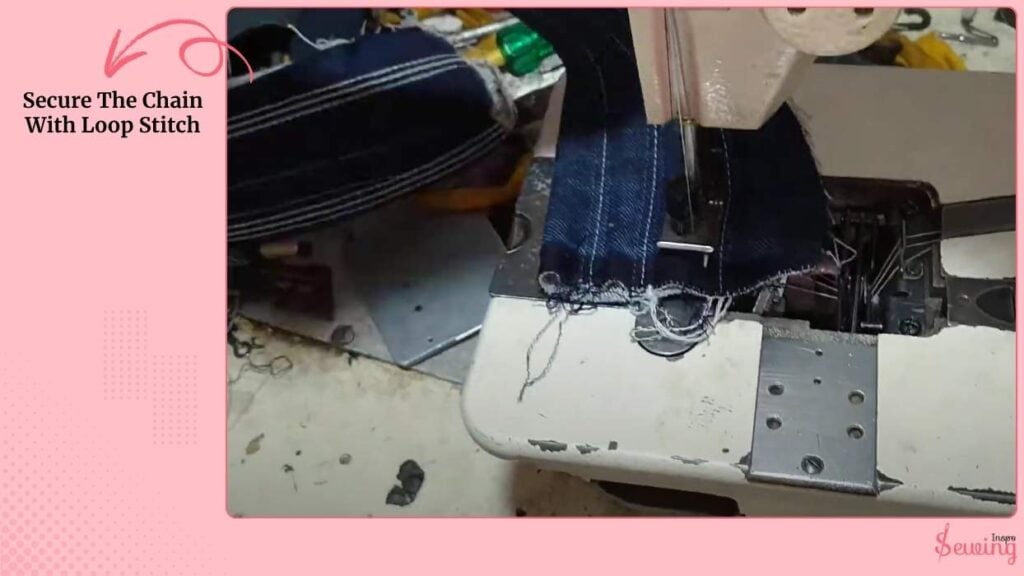
FAQ
Can I use multiple thread colors in one design?
Yes! Just tie off the chain when you want to switch colors, then rethread and start again at the new spot in your design.
What kind of fabric works best?
Medium-weight cotton or linen is ideal. For stretchy or very thin fabric, always use a stabilizer to prevent puckering.
How do I keep curves neat?
Move the fabric slowly and rotate it gently with both hands. Think of it like steering—you don’t force it, just guide it.
Will the chain stitch unravel?
If left unsecured, yes. Always tie the last loop off, pull it through itself, or knot the tail at the back of your work.
Conclusion
And there it is, a flatbed chain stitch design that looks hand-done but is way faster. The machine does the looping magic under the fabric, while I just trace my own drawing with steady hands.
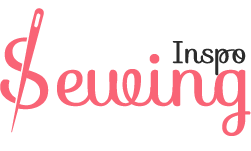
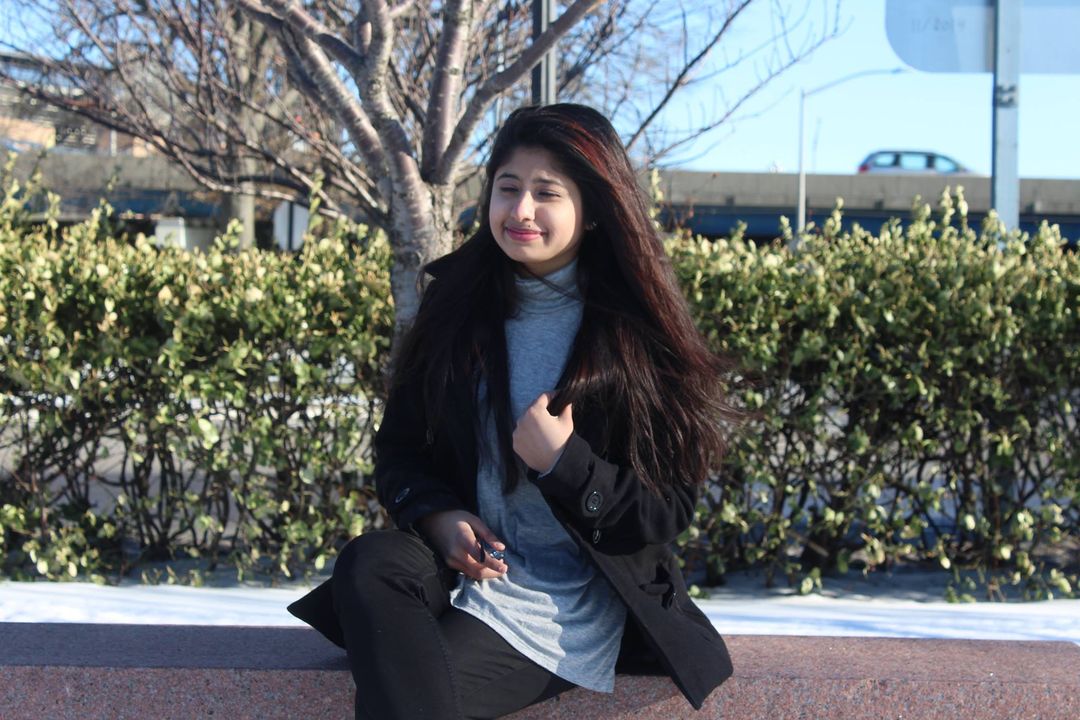
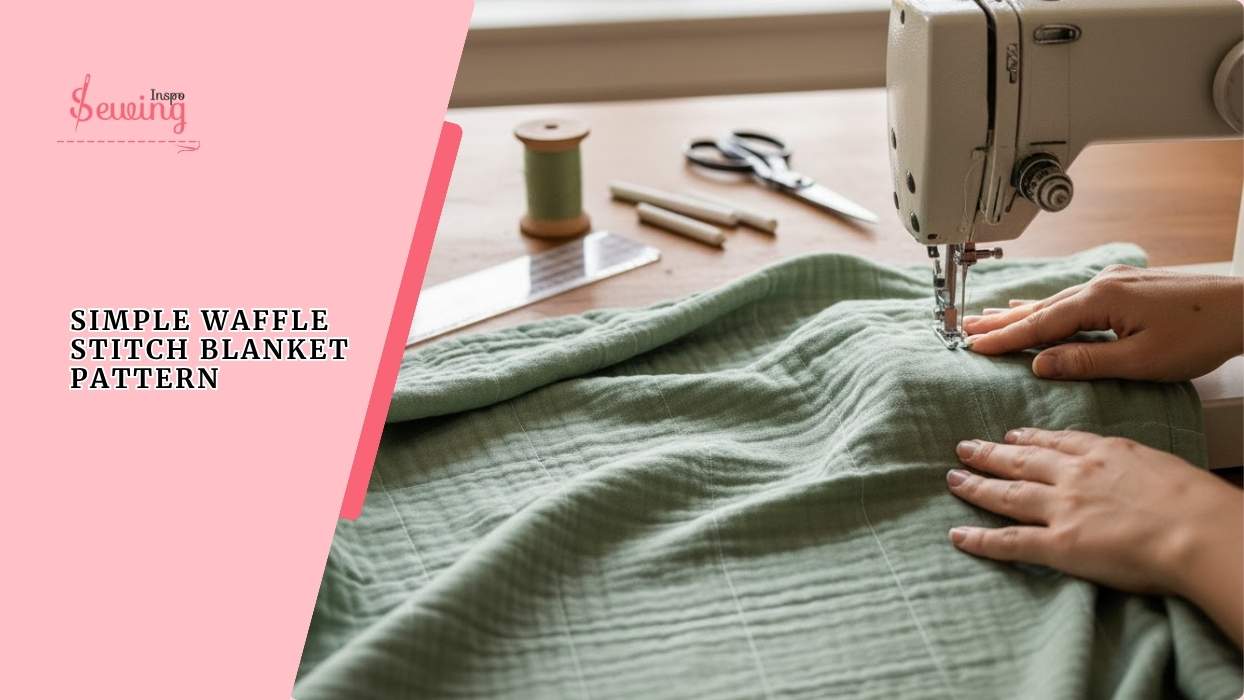
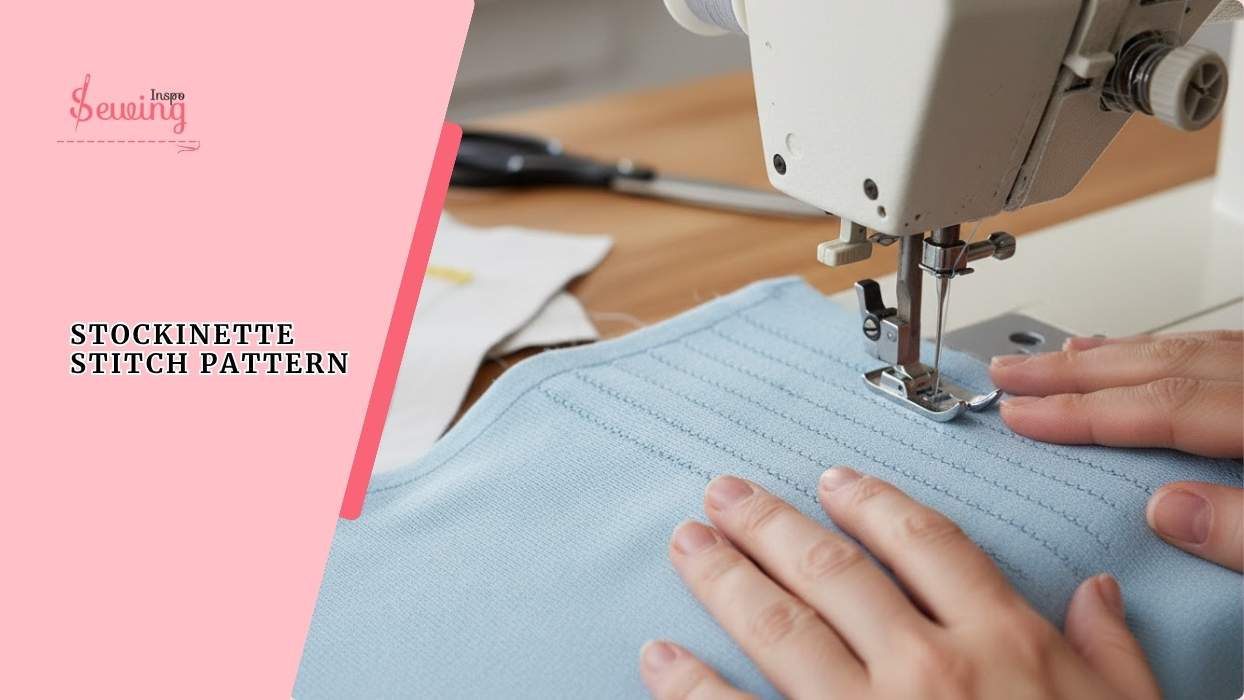
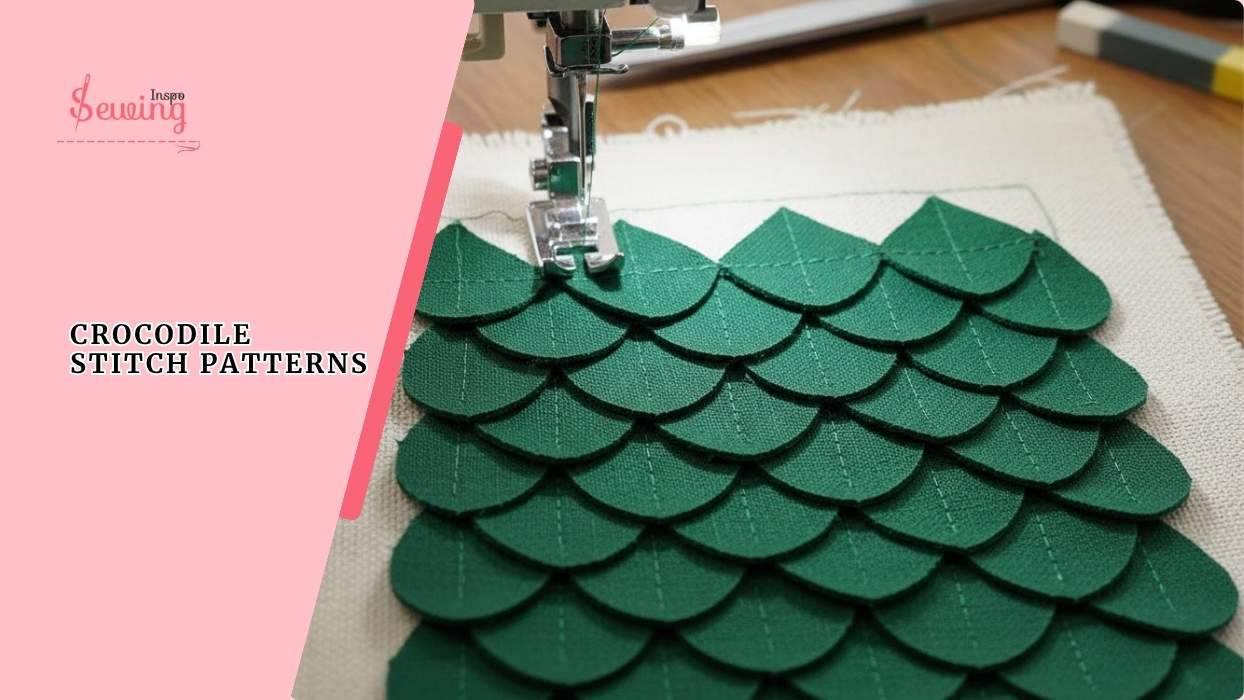
Leave a Reply